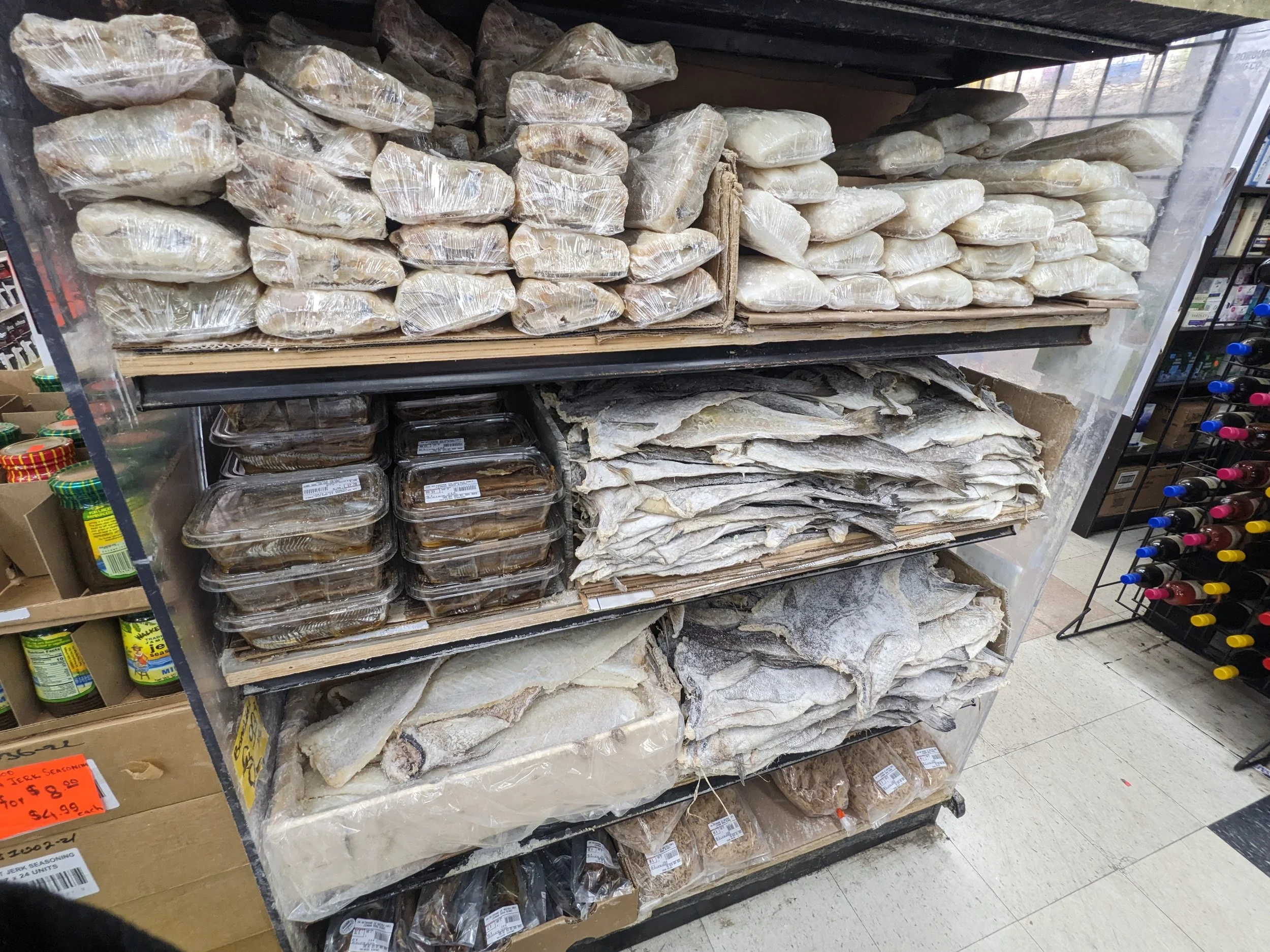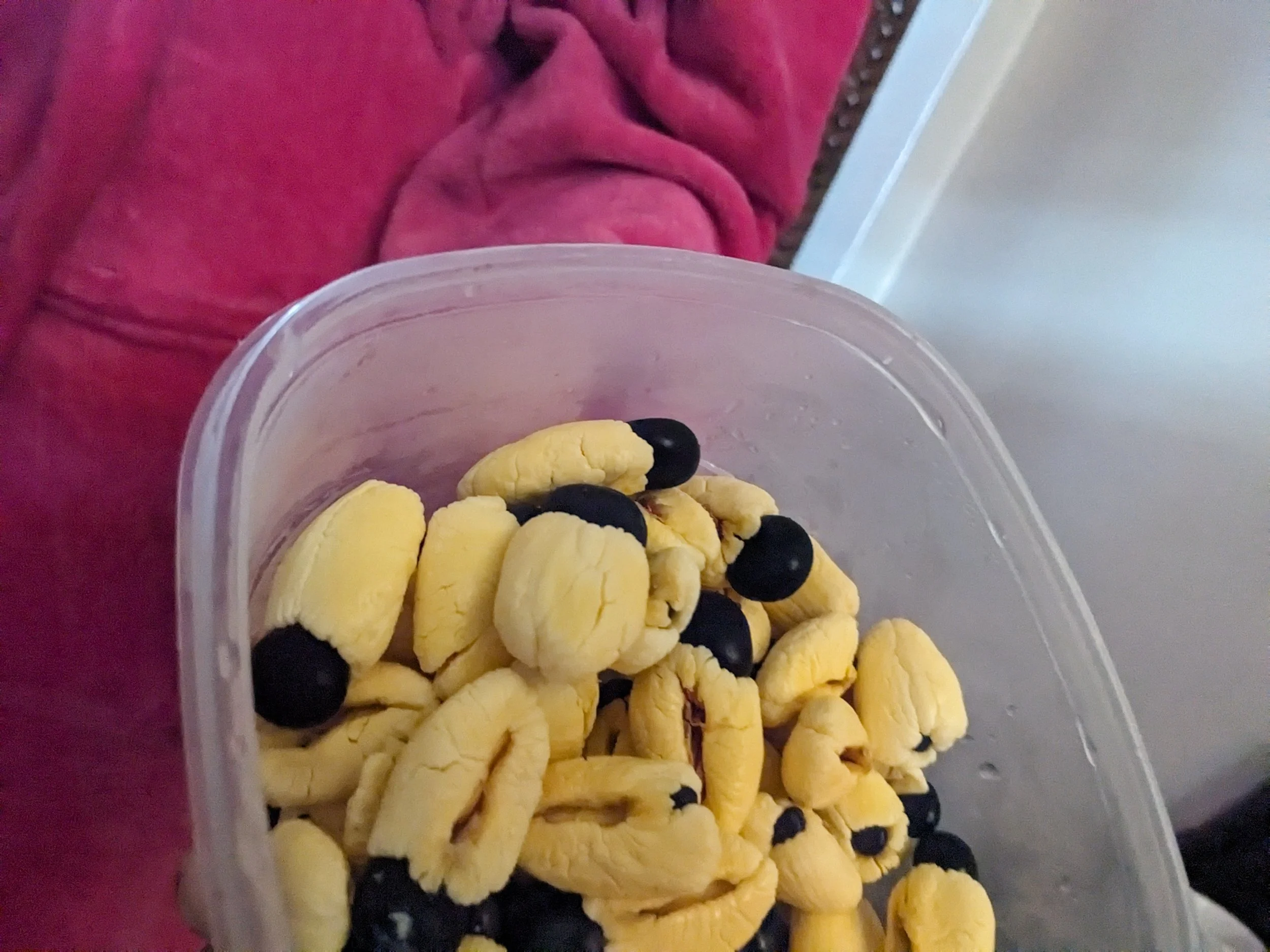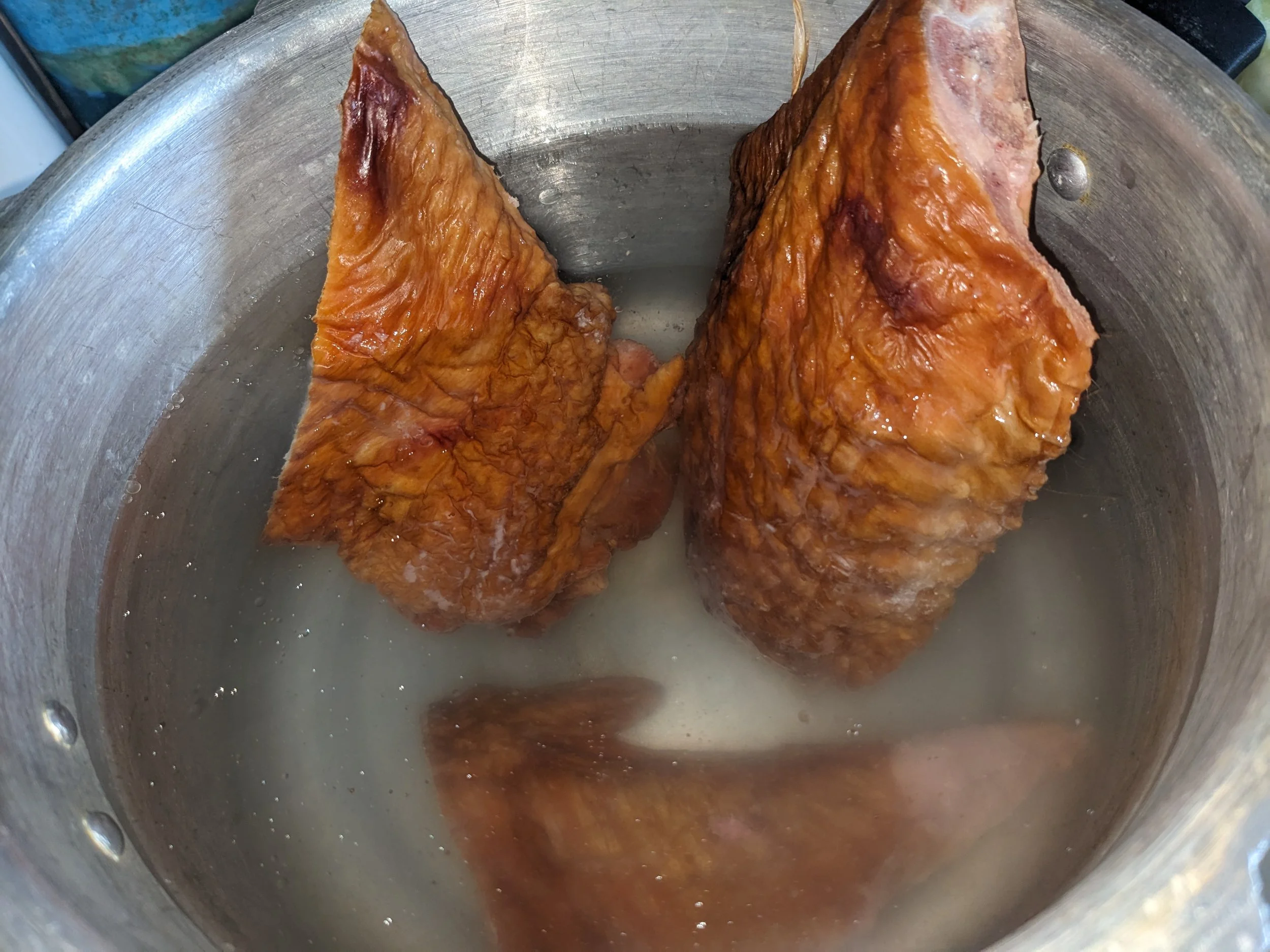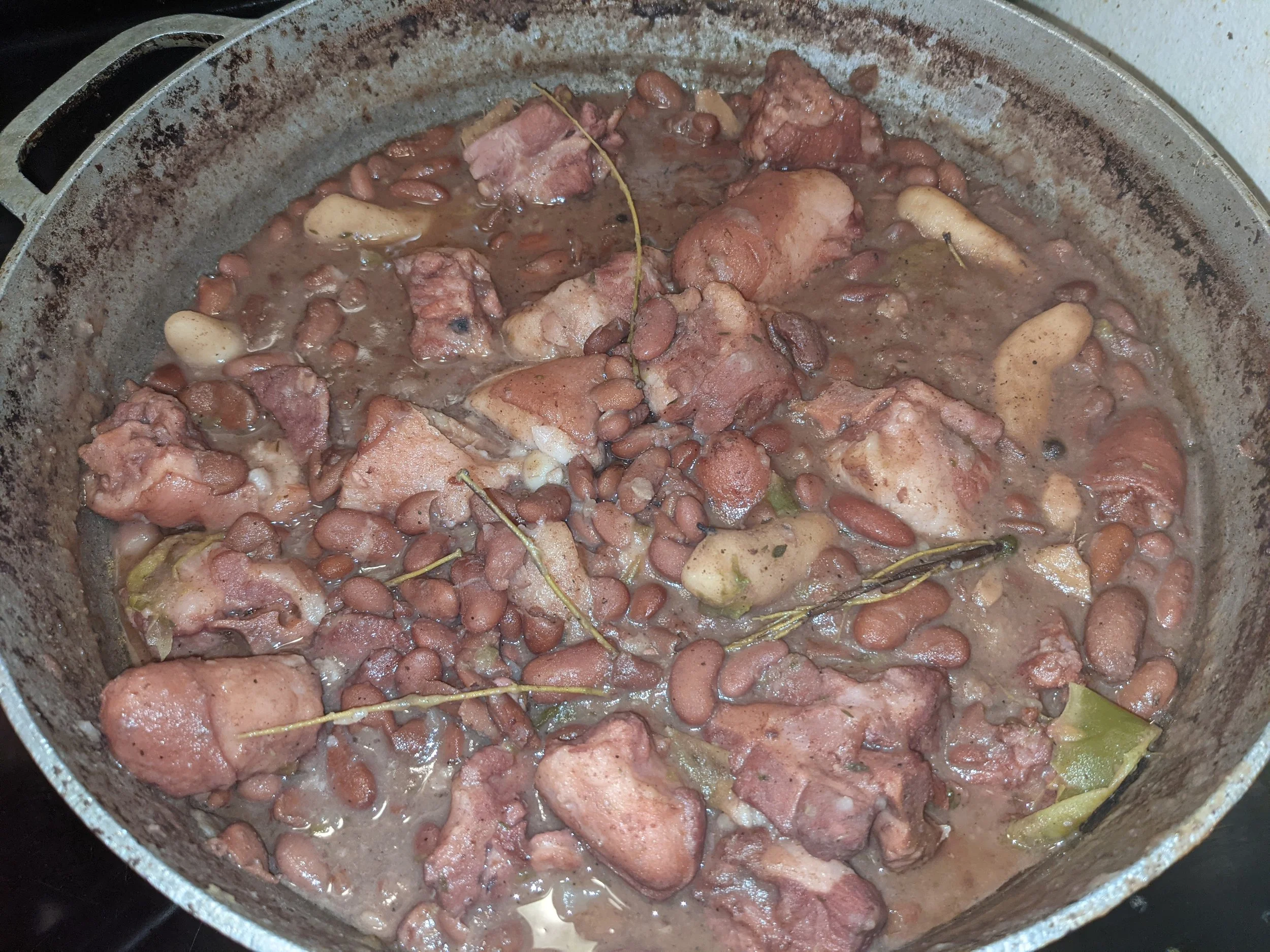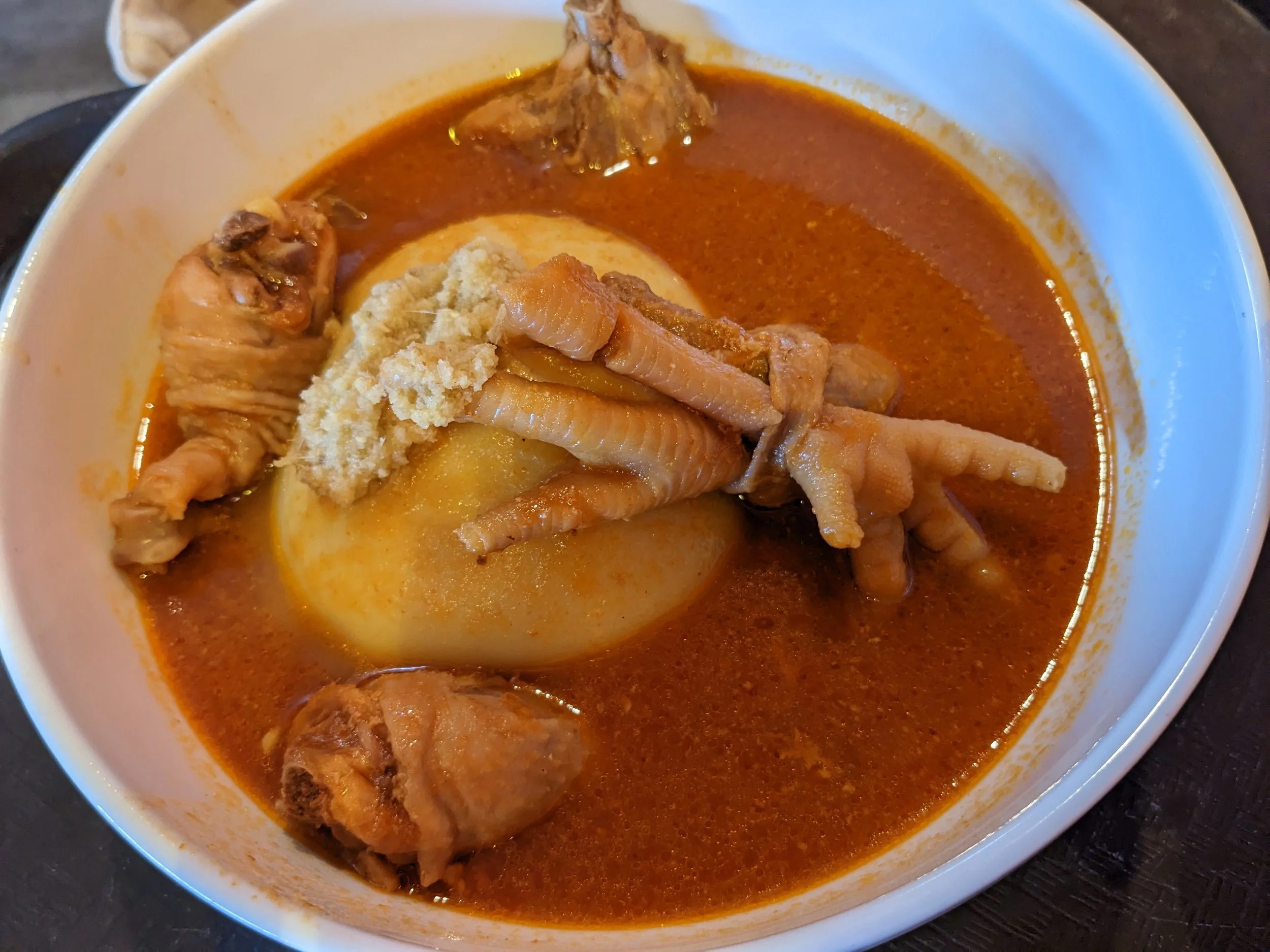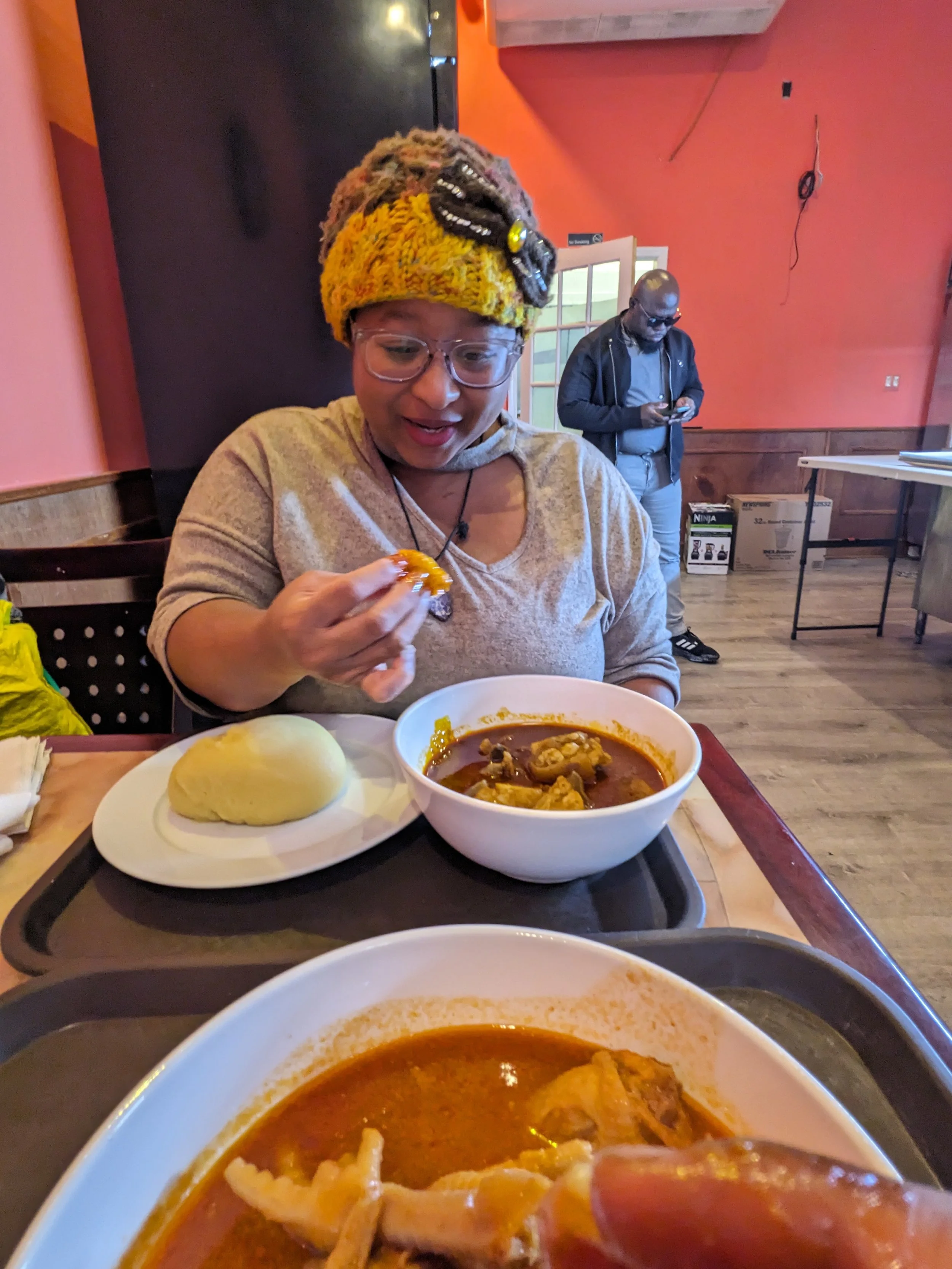Exploring Preservation and Smoked Meat Traditions Across the Diaspora + Female Street Vendors
Exploring Preservation and Smoked Meat Traditions Across the Diaspora
Preservation techniques like drying, curing, smoking, and salting have been essential culinary practices across the African, Caribbean, and Latin American diasporas, deeply rooted in history and necessity. Before refrigeration, these methods ensured that meats and seafood could survive long storage times and transport, becoming foundational to many beloved dishes that carry rich cultural significance to this day.
Saltfish — often salted and dried cod — is a prime example of how preservation shaped diasporic food traditions. This method, introduced to the Caribbean through European colonial trade routes, allowed fish caught in cold northern waters to be transported thousands of miles without spoiling. Saltfish became a cheap, high-protein staple for enslaved peoples and working-class communities, turning necessity into culinary artistry.
In Jamaica, ackee and saltfish is the national dish and a vivid example of this legacy. The ackee fruit, itself brought from West Africa, pairs perfectly with the salty, preserved codfish, creating a dish rich in flavors and history that sustained plantation workers and now nourishes cultural pride.
Chef Ayana’s Ackee & Satlfish
Homemade Ackee & Saltfish with Provision: Dumpling & Banana
Similarly, in Trinidad and Tobago, buljol showcases salted codfish flaked and mixed with fresh vegetables, herbs, and peppers for a vibrant, cold breakfast salad that connects African, European, and Caribbean foodways. In Puerto Rico, bacalao (salted cod) is featured in stews like bacalao guisado, slow-cooked with tomatoes, peppers, potatoes, and spices, reflecting Mediterranean and Caribbean culinary exchanges shaped by preservation techniques.
Bacalao (Saltfish) Cod in a Pot of water boiling out the excess salt
Chef Ayana’s diasporic smorgasborg: Saltfish, Provisions, Pickled Salad
Chef Ayana’s Stewed Bacalao with tomato and yucca over rice
Beyond seafood, smoked and salted meats form a backbone of diasporic cuisines, infusing dishes with deep flavor and tradition. In the Caribbean, smoked pork hamhocks or turkey necks frequently flavor collard greens, cabbage dishes, and hearty soups. The smoky taste enriches staples like Jamaican stew peas—a vibrant bean stew often made with salt meat or pigtail. These meats add not just flavor but a preserved protein source when fresh meat was not always accessible.
Smoked Turkey Necks
Smoked Turkey Wings in the Pot
A Pot of Chef Ayana’s Collard Greens Simmering with Smoke Turkey
Jamaican Stew Peas by Chef Ayana
Smoked Hamhocks
Root vegetables like rutabagas and turnips are also commonly paired with smoked meats across the diaspora, offering hearty, comforting meals that reflect ancestral ingenuity. The use of salt pork and smoked meats in soups and stews is mirrored in African cuisines, where smoking and curing are vital preservation methods.
Chef Ayana’s Rutabaga (Turnips) & Hamhocks
Chef Ayana’s Hamhocks simmering in Rutabaga (Turnips)
Rutabagas and Hamhocks by Chef Ayana
In Sub-Saharan Africa, drying and smoking meat is a traditional, low-input way to preserve meats without refrigeration. Indigenous smoking practices tenderize and flavor tougher cuts of beef, goat, or mutton, while smoked fish is a valued protein across riverine and coastal communities. African soups and stews—such as Nigeria’s egusi and ogbono soups or Ghana’s palm nut soup—often feature smoked or dried fish that imparts rich umami depth. This practice connects the continent’s foodways directly to diaspora cooking traditions.
Ghanaian Soup
Chef Ayana eating and in awe at Ghanaian soup dishes! LOL
The techniques of salting, curing, drying, and smoking are not just pragmatic—they are cultural expressions that shape identity and tradition. They link the disparate geographies of Africa, the Caribbean, Latin America, and North America through shared culinary practices forged by necessity, migration, and creativity.
Every pot of ackee and saltfish, bowl of buljol, or plate of bacalao is infused with stories of survival and adaptation. The smoky aroma simmering through green cabbage, the salt-cured depths of saltfish in stews, and the resilient flavors of these dishes are legacies of preservation that transcend flavor—they are living history.
Walking the streets of Flatbush, Canarsie, and other vibrant Caribbean and African diasporic neighborhoods in places like Brooklyn, it’s impossible to miss the powerful presence of women—our aunts, mothers, and vendors—who carry the heart and soul of home with them. These ladies are more than street vendors; they are cultural pillars, fiercely dedicated to preserving and sharing the tastes and traditions of their homelands.
At airports, I’ve witnessed African aunties and Caribbean women meticulously packing their luggage with smoked meats, dried fish, dried beans, and other preserved staples—long before the days of international shipping made it easier. This dedication to getting food just right, to having that unmistakable, potent flavor on distant shores, speaks volumes about the importance of culinary lineage and family bonds. Our loved ones rely on these packages; we anxiously anticipate them like letters from home, knowing each bite carries stories, memories, and the very essence of our culture.
On city sidewalks, these same women sell tamarind balls, spicy snacks, and dried provisions, transforming the streets into living markets of heritage. In Haitian, African, Caribbean, and Latin American communities alike, the sight of these vendors is a daily celebration of resilience and entrepreneurship. Their stalls are more than commerce—they are lifelines back to “foreign” lands meaning abroad, a way to immerse oneself in culture even when oceans away.
Delicious Tamarind Ball Snacks!
In neighborhoods like Flatbush or Canarsie, where multiple cultures converge, it becomes clear that food is a language spoken across generations and geographies. The women selling their traditional favorites not only sustain their families but keep our customs alive, nourishing the diasporic spirit no matter where we are.
This weaving of preservation, flavor, and community shows that wherever the diaspora moves, the roots remain strong, and the tastes of home travel fiercely—carried in luggage, set up on street corners, and shared around tables in distant lands. They remind us of who we are, where we come from, and the tenacity it takes to keep that heritage thriving in every bite.
This scene of steadfast cultural guardianship beautifully complements the history of preservation techniques—salting, drying, smoking—that shape many beloved dishes in our communities. It’s a living tradition, embodied by those aunties and vendors who make sure that no matter how far “foreign” feels, the flavors and heart of home are always within reach.
This rich tapestry of techniques reminds us how ancestral knowledge continues to nourish present and future generations—both in kitchens and culture.
Across Africa, Latin America, India, Asia, and the Caribbean, women play a powerful and vital role as street vendors, keeping culinary traditions alive and vibrant in bustling urban markets and neighborhood streets. Just as you see in Caribbean and African diasporic communities in places like Brooklyn’s Flatbush or Canarsie, this presence of women selling food on the streets is a global, cross-cultural constant.
In African cities like Lagos, women sell traditional dishes such as moin-moin (steamed bean pudding), akara (fried bean cakes), suya (spiced grilled meat), and kelewele (spiced fried plantains), each carrying deep cultural history and local flavors. Similarly, in countries across Latin America, India, and Asia, women food vendors bring forth street foods rooted in centuries-old culinary traditions, offering everything from spicy snacks to fresh, hearty meals, often adapting recipes passed down through generations.
These street vendors are more than just sellers—they are keepers of culture, entrepreneurs, and ambassadors of their heritage, offering tastes that transport people to their homelands and neighborhoods even far away. Their stalls often feature culturally specific snacks and staples that nourish body and soul, sustaining immigrant and local communities alike.
Walking through vibrant diasporic neighborhoods—whether it’s African markets, Caribbean enclaves, Indian bazaars, or Latin American streets—the sight and smell of women selling these foods create a living, edible bridge to history and home. They preserve culinary identity, economic independence, and communal connection, ensuring that traditional foodways continue to thrive in every corner of the globe.
This global phenomenon highlights how food culture and women’s roles intersect powerfully across continents, showing that wherever communities migrate or gather, women’s street food vending remains a vital part of preserving, innovating, and sharing cultural heritage.


